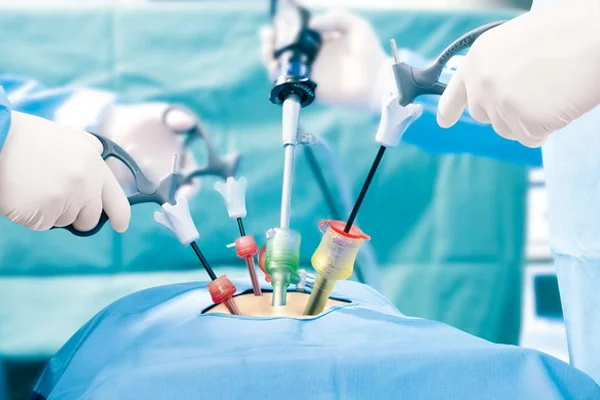
Women’s health issues frequently need specific diagnostic and therapeutic approaches. The hysteroscopy is, in fact, a vital medical treatment in contemporary gynecology. Additionally, this minimally invasive method enables physicians to efficiently evaluate the uterine cavity. Additionally, patients who comprehend this process may feel more assured about their course of therapy.
1. Understanding the Basics of Hysteroscopy
In this process, doctors use a thin fiber optic telescope called hysteroscope, to illuminate the uterus. In addition, this advanced device gives the opportunity to have unobstructed images of the uterus. Also, the gadget is gently placed by the surgeon through the vagina and the cervix as well. It can be either a specialised diagnostic process or a surgical operation, depending on the situation. Besides, diagnostic hysteroscopy is useful in identifying sites of structural pathology as a cause of abnormal uterine bleeding. The detected issues are then treated during the same operation via surgical hysteroscopy. For a comprehensive evaluation, doctors frequently combine hysteroscopy with additional diagnostic procedures. This method also confirms the findings of hysterosalpingography and ultrasound tests. Additionally, integrating testing enables physicians to develop treatment programs that are more successful.
2. Common Reasons for Undergoing Hysteroscopy
The necessity for a hysteroscopic examination is frequently indicated by irregular menstrual flow. Additionally, when individuals have unexplained spotting in between periods, doctors advise this surgery. Additionally, postmenopausal bleeding necessitates a hysteroscopy for prompt examination. A deeper examination of the uterine environment may be necessary for fertility problems. Furthermore, repeated miscarriages might occasionally be a sign that a hysteroscopic check is necessary. Doctors are then able to recognize and treat disorders that impact reproductive health. The process aids in identifying and eliminating troublesome growths, such as fibroids and polyps. Additionally, uterine adhesions can be treated by surgeons in the same treatment. Additionally, hysteroscopy makes congenital anomalies such uterine septums easily evident.
3. Preparation and Pre-procedure Guidelines
Doctors conduct thorough medical history reviews before scheduling the procedure. Moreover, patients must disclose all current medications, including supplements and vitamins. Furthermore, some medications might need temporary discontinuation before the procedure. Physical examinations and pregnancy tests form essential parts of pre-procedure protocol. Additionally, blood tests help ensure patients are fit for the procedure. Subsequently, doctors provide specific instructions about fasting and day-of-surgery preparations. Patients should arrange transportation for their return journey after the procedure. Moreover, wearing comfortable clothing helps ease the post-procedure experience. Furthermore, following pre-operative instructions carefully ensures optimal procedural outcomes.

4. The Procedure: Step-by-Step Process
Healthcare professionals begin by properly positioning patients on the examination table. Moreover, appropriate anaesthesia ensures patient comfort throughout the entire procedure. Furthermore, the cervix undergoes careful dilation to accommodate the hysteroscope. Surgeons introduce a special solution to expand the uterine cavity gently. Additionally, this step provides better visibility of the uterine structures. Subsequently, doctors can examine the fallopian tubes and uterine lining clearly. The actual procedure length varies based on specific requirements and findings. Moreover, diagnostic procedures typically take less time than operative hysteroscopies. Furthermore, additional procedures might extend the overall duration considerably.
5. Post-procedure Care and Recovery
Patients typically spend several hours in recovery following the procedure. Moreover, mild cramping and light bleeding commonly occur after hysteroscopy. Furthermore, temporary dizziness and nausea might affect some patients initially. Adhering to postoperative directions adds to proper healing as well as recuperation procedure. Moreover, patients should inform their healthcare givers of any changes within them or what they feel is strange. Afterward, people return to their usual routine after three to five days in most cases. New developments can be detected, and follow-up appointments are usually urged in order to review developments. Also, doctors give detailed clearances about what should be done after the procedure and what is prohibited. Furthermore, maintaining good communication with healthcare providers supports optimal recovery.
Conclusion
Hysteroscopy tendonitis serves as a valuable tool in modern gynaecological care. Indeed, this procedure offers both diagnostic and therapeutic benefits for various conditions. Furthermore, understanding the process helps patients approach their treatment with confidence. With proper preparation as well as care, hysteroscopy provides effective solutions for many women’s health concerns.

